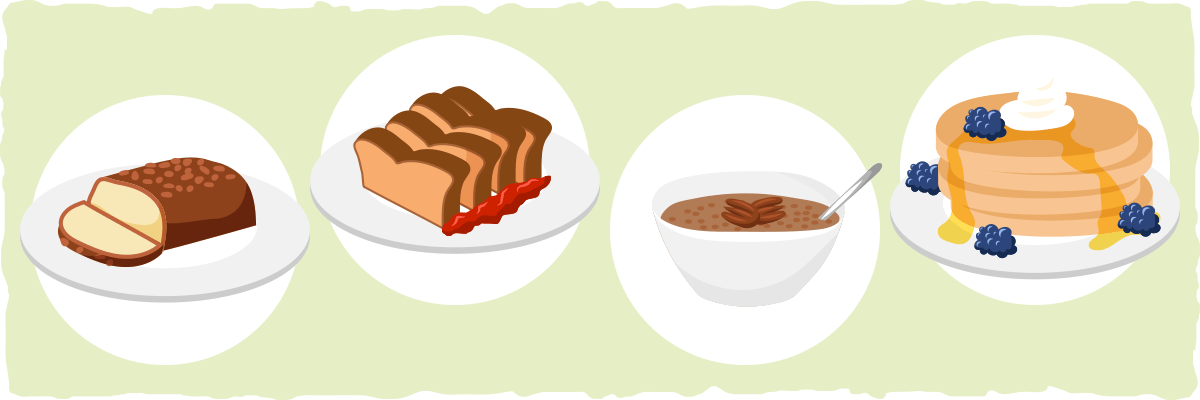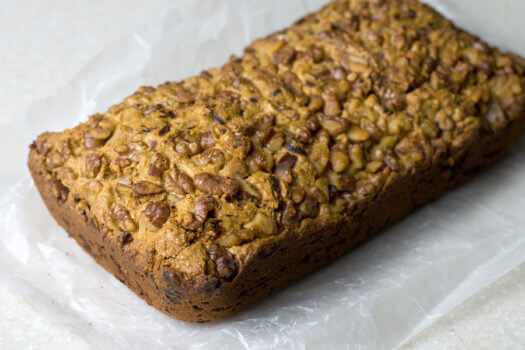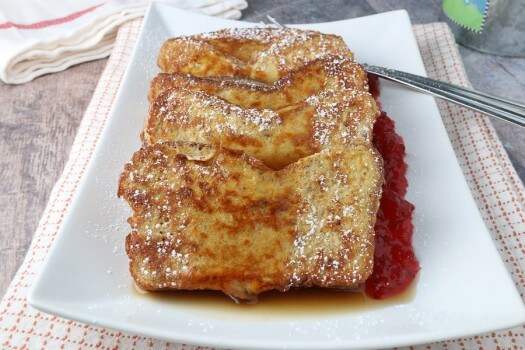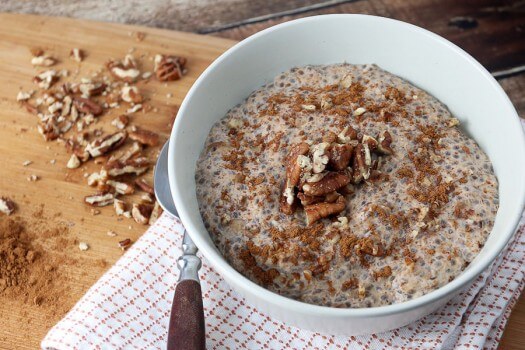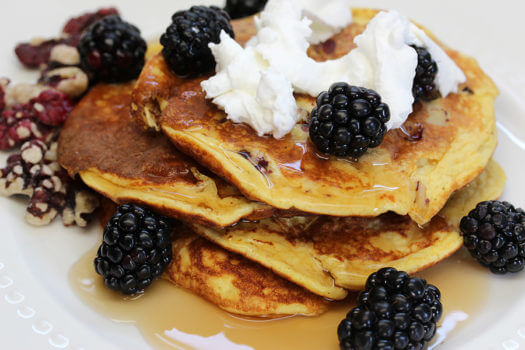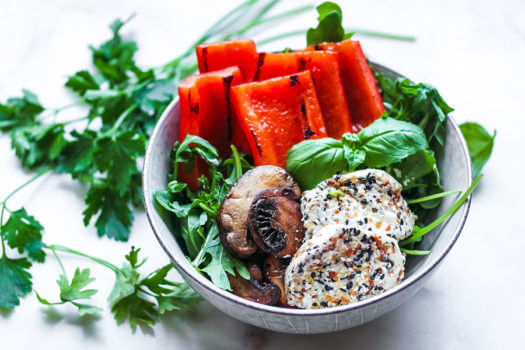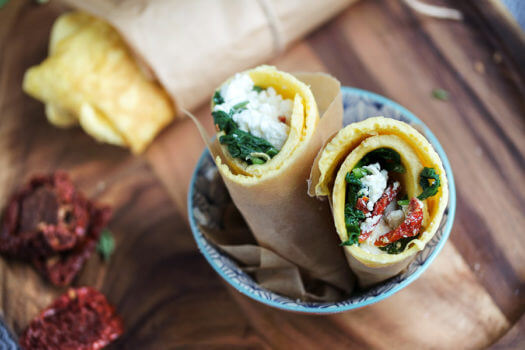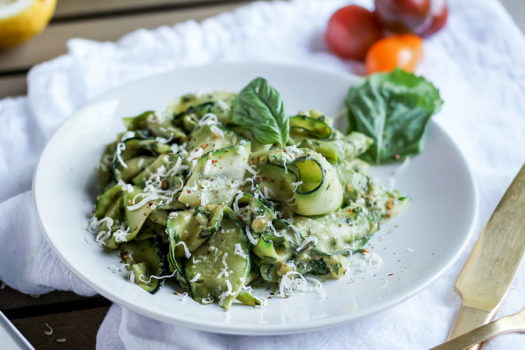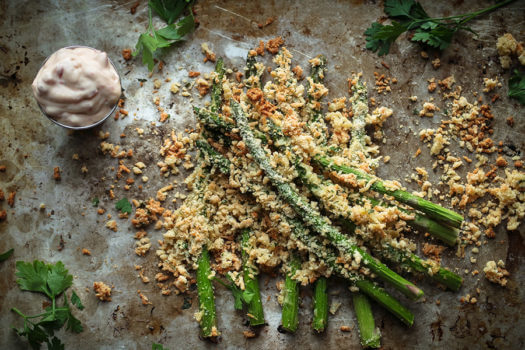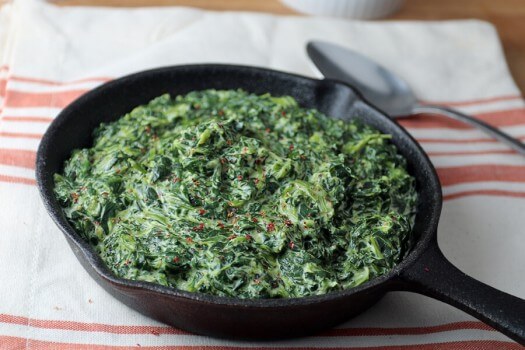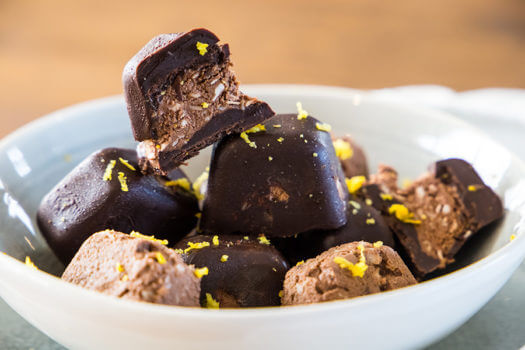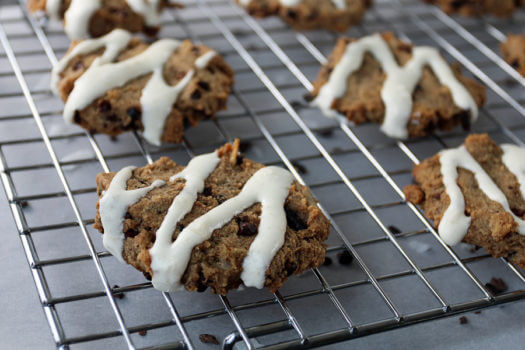The vegetarian diet is commonly regarded as one of the healthiest diets for humanity. Many studies have found that vegetarian diets are associated with a lower rate of heart disease and diabetes and may improve health more than the average non-vegetarian diet. However, this doesn’t mean that the vegetarian diet or the vegetarian keto diet is the best diet for everyone’s health.
The ketogenic diet, for example, has been found to be more effective than the vegetarian diet for weight loss, improving triglyceride and blood sugar levels, and reducing the severity of diseases like type 2 diabetes, obesity, epilepsy, Alzheimer’s disease, polycystic ovary syndrome, and some types of cancer.
But the ketogenic diet comes with some environmental and health concerns as well. The primary environmental issue with all meat-containing diets stems from where people source their animal products like meat and dairy. Meat and dairy that comes from animals raised conventionally in controlled animal feeding operations (CAFOs) are not only nutritionally inferior, but they contribute to climate change and the abuse of animals and the local environment as well.
Fortunately, we can address these potential issues by borrowing principles from both the ketogenic diet and the vegetarian diet to formulate an eating plan that is healthier for humans, animals, and the environment. In other words, we can get the benefits of the vegetarian diet and ketogenic diet in one diet — the vegetarian ketogenic diet.
What is The Vegetarian Keto Diet?
The simplest definition of the vegetarian ketogenic diet is a diet free of meat, fish, and fowl flesh that restricts carbohydrates. By eating in this way, we can reap all of the benefits of the ketogenic diet while reducing our carbon footprint, decreasing animal abuse, and improving health.
Eggs and dairy — two of the main animal products you can eat on the vegetarian ketogenic diet — are very nutrient dense. If you want to reduce the impact on the environment and improve animal welfare, you should source your eggs and dairy from local, pasture-raised chickens and cows. By supporting these healthy and sustainable animal rearing practices, you will be investing in the most humane and healthy animal products (more on this later).

Throughout this article, we will focus on how to implement a vegetarian ketogenic diet that includes eggs and dairy. (No meat, fish, or poultry products will be recommended at all.) On the other hand, if you want to eliminate all animal products for your ketogenic diet, then you will find much better suggestions — like a complete list of dairy and egg alternatives — in our comprehensive guide to the vegan ketogenic diet.
The Different Types of Vegetarian Keto
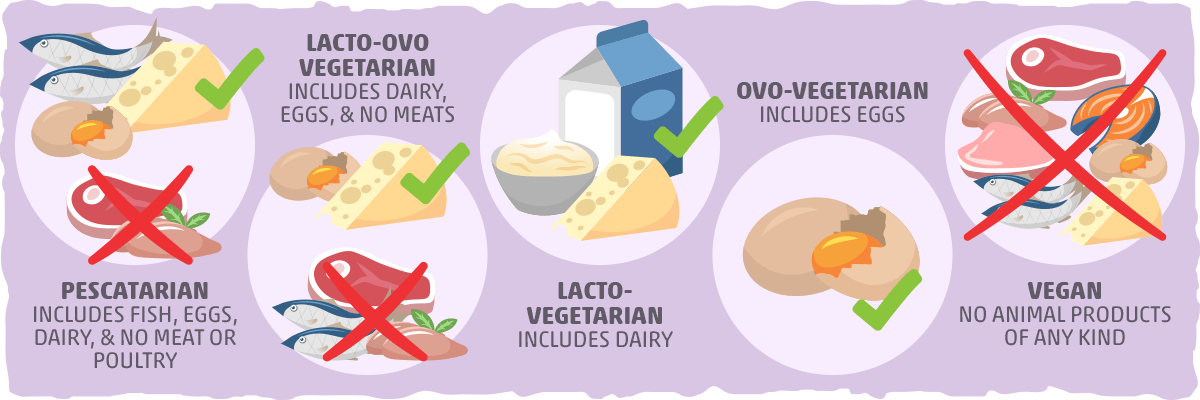
To help you decipher between the different approaches to vegetarianism on keto, here’s a quick overview of the main options (categorized from the most to least animal products included) :
- Pescatarian — This diet includes fish, eggs, and dairy, but no meat or poultry.
- Lacto-ovo vegetarian — A plant-based diet that includes dairy products and eggs, but no meat, poultry, or fish.
- Lacto-vegetarian — With this option, the only animal product included is dairy.
- Ovo-vegetarian — With this approach, the only animal product included is eggs.
- Vegan — No animal products included. To learn more, check out our guide to vegan keto.
As mentioned in the previous section, this guide will focus mostly on a lacto-ovo vegetarian keto diet. We’ll also explore several dairy and egg substitutes along the way.
An Overview of The Keto Diet For Vegetarians
To implement the diet correctly, follow these rules:
- Limit your total carbohydrate consumption to 35 grams or less per day.
- Eliminate all animal flesh from your diet (e.g., meat, fish, and poultry).
- Eat plenty of low-carb vegetables.
- Get at least 70% of your calories from fat.
- Consume plant-based proteins, eggs, and high-fat dairy to meet your protein needs (roughly 25% of calories).
- Supplement with nutrients that you may not be getting enough of like vitamins D3, DHA & EPA, iron, and zinc.
- Use the keto calculator to figure out your calorie and macronutrient needs.
- Continue reading for more precise vegetarian keto diet recommendations.
How to Limit Your Carbs as a Vegetarian
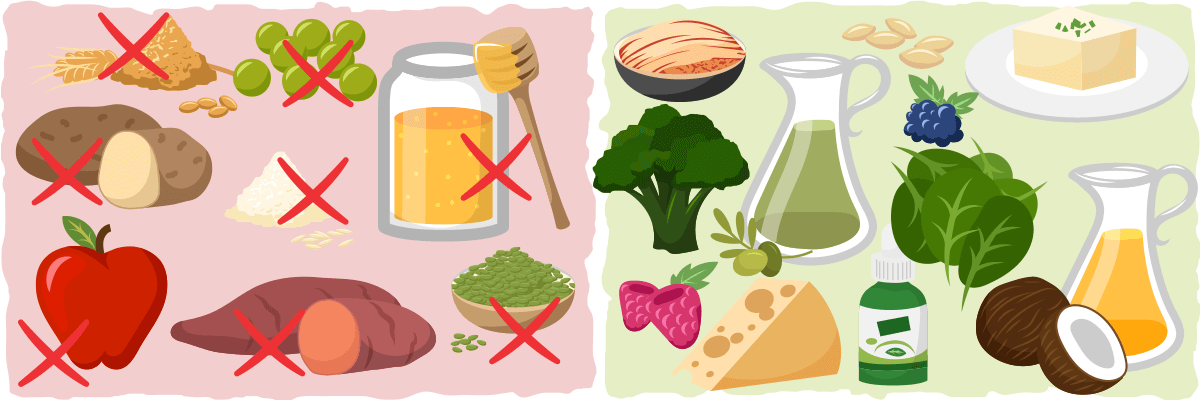
The most common mistake vegetarians make on the ketogenic diet is eating too many carbohydrates. This is mostly because many vegetarian-friendly favorites are filled with carbs. The most common high-carb culprits are:
- Grains – wheat, corn, rice, cereal, etc.
- Legumes — lentils, black beans, peas, etc.
- Sugar – honey, agave, maple syrup, etc.
- Fruit – apples, bananas, oranges, etc.
- Tubers – potato, yams, etc.
While you are on the ketogenic diet, do not eat the foods listed above. These foods are so high in carbohydrates that one serving can take you above your carb limit for the day and kick you out of ketosis.
However, just because you can’t eat these foods, doesn’t mean you are stuck with eggs and lettuce as your only vegetarian keto-friendly options.
Here is a brief overview of all the foods that you can eat:
- Vegan “meats” — tempeh, tofu, seitan, and other high-protein, low-carb vegan “meats”
- Leafy greens – spinach, kale, etc.
- Above ground vegetables – broccoli, cauliflower, zucchini, etc.
- High Fat Dairy & Eggs – hard cheeses, high fat cream, butter, eggs, etc.
- Nuts and seeds – pistachios, almonds, sunflower seeds, pumpkin seeds, etc.
- Avocados and berries – raspberries, blackberries, and other low glycemic impact berries
- Sweeteners – stevia, erythritol, monk fruit, and other low-carb sweeteners >
- Other fats – coconut oil, olive oil, MCT oil, avocado oil, etc.
For a more comprehensive breakdown of the calories, fats, proteins, and carbs in some of these foods, check out our ketogenic diet food list.
By sticking to the vegetarian keto-friendly foods listed above, you can be a vegetarian and a keto dieters at the same time, while covering most of your nutritional needs.
At first, however, it may seem challenging to get enough fat without the help of meat and fish. Fortunately, you won’t have to eat sticks of butter and dozens of eggs every day to meet your fat needs. There are plenty of healthy plant-based fats worthy of being your new keto staples as well.
How to Get Enough Fat on the Vegetarian Keto Diet
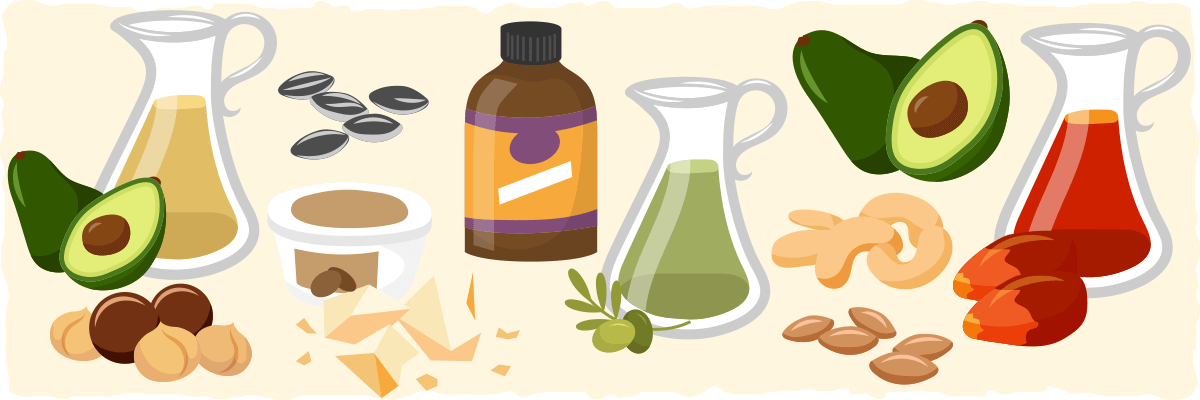
Eggs and high-fat dairy will be a significant component of most of your keto meals. However, they won’t be your only source of fat. In fact, you can use many plant-based oils to replace all the animal fats commonly used in cooking and baking if you’d like.
Here’s a brief list of the oils you can use and what you can use them for:
- Avocado Oil. Avocado oil has a ton of healthy monounsaturated fats. It also has the highest smoke point of any other cooking oil (at 520 degrees Fahrenheit), which makes it perfect for cooking, baking, and deep frying. You can use it to fry the vegetarian tater tots that you’ll learn about later in the article.
- Coconut Oil. This oil provides you with an abundance of fatty acids that are the ideal fuel sources for keto dieters. It is an excellent oil for fat bombs, desserts, and cooking and baking at temperatures under 350 degrees Fahrenheit (similar to butter).
- MCT Oil. This oil is commonly derived from coconut oil and palm oil. It contains medium chain triglycerides, which are saturated fatty acids that skip normal fat digestion and go right to the liver where they are converted into ketones for fuel. Add it to your salad dressings, sauces, smoothies, fat bombs, and hot drinks like coffee or tea for a potent energy boost.
- Olive Oil. Olive oil is one of the healthiest oils you can consume. In fact, a recent 2018 study found extra virgin olive oil to be the safest and healthiest oil for cooking, baking, and deep frying.
- Red Palm Oil. Being an incredible source of Vitamins A and E, red palm oil doubles as a vitamin supplement. It has a mild carrot-like flavor and a rich, buttery texture. You’ll find that cooking with it can enhance the flavor of your vegan meat, nuts, and seeds. Caution: When buying palm oil, however, you must be extremely careful because many of these products are made in a way that devastates the wildlife and their environment. If you do want to add red palm oil to your keto diet, make sure you only buy RSPO-certified or Certified Sustainable Palm Oil (CSPO) products.
Although these aren’t all of the plant-based oils you can consume, these oils are the healthiest and most versatile.
That being said, high-fat plant foods are the ideal fat source. These foods will help you meet your fat, vitamin, mineral, and fiber needs simultaneously, making them a vegetarian keto dieters best friend.
Here is a list of the healthiest plant-based fat sources for the vegetarian ketogenic diet:
- Avocados. Like avocado oil, but packed with vitamins, minerals, and antioxidants, the avocado is the perfect addition to any vegetarian keto meal. You can also make keto-friendly vegetarian desserts with avocado like Chocolate Chunk Avocado Ice Cream.
- Nuts. Nuts are a fat-rich and healthy addition to any diet. I tend to favor macadamia nuts and cashews over any other nut because they have the highest amount of healthy monounsaturated fats and the lowest amount of inflammatory omega 6 fats. Make sure, however, that you know the carb content of these nuts. Consuming too many cashews, for example, can easily kick you out of ketosis.
- Seeds. Seeds like pumpkin seeds, sesame seeds, flaxseeds, and sunflower seeds can be another high-fat, healthy addition to your diet. However, they contain higher levels of inflammatory omega-6 fats, so don’t rely on them as a dietary fat staple.
- Vegan Dairy Alternatives. Later in this article, we will go over a couple of dairy substitutions that you can use to replace things like butter, cream, yogurt, and cheese in your favorite keto recipes. For a more in-depth look at vegan dairy substitutes for keto, read our comprehensive guide to the vegan ketogenic diet.
By incorporating a combination of these plant-based oils and fat-packed plant foods, you won’t even need eggs and high-fat dairy to meet your fat needs.
There is, however, one downside to using these fat sources: many of them contain little to no protein. Without meat, how can we get enough protein on a vegetarian keto diet?
The Best Vegetarian-Friendly Protein Sources for The Ketogenic Diet
Although it is one of the primary sources of protein on the keto diet, meat is not necessary to meet your protein needs. In fact, you could get enough protein by simply eating eggs and cheese every day.
However, regardless of how much you love cheese and how many ways you can prepare eggs, relying on them is not necessary either. You can just as easily meet your protein needs with these vegan protein sources:
Tofu
Tofu is made from soybeans and is high in protein and calcium. The best part is you can use it as a convincingly tasty substitute for meat, poultry, and fish.
Although tofu tends to be soft and mushy, you can make it as firm and chewy as meat by buying extra-firm tofu and pressing the heck out of it or freezing it and then pressing it. Make sure you season or marinate it before cooking so that it can soak up all of the flavors like a sponge.
Tempeh
Tempeh is a fermented form of soy that is firmer than tofu and has a more grainy texture, making it a great substitute for fish and ground beef.
All you have to do to prepare tempeh is slice it, dice it, or grind it up in a food processor. If you find tempeh to be a bit bitter, try steaming it for a few minutes before using it.
Important Health Considerations for Soy Consumers: Because tofu and tempeh are made from soy, it is important to notice how you feel after including them in your diet.
Although soy tends to be healthy for most people, it does contain goitrogens, which are plant compounds that can impair thyroid function.
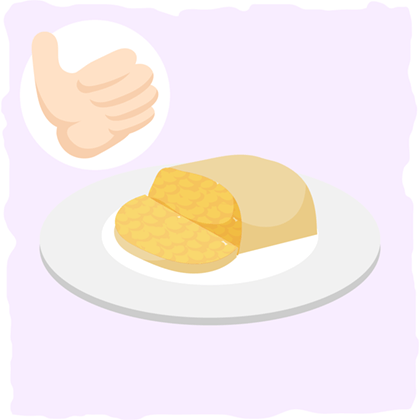
If you experience fatigue, cold sensitivity, constipation, dry skin, or unexplained weight gain as a result of upping your intake of soy-based products, then you should limit the amount of soy you consume and supplement your diet with iodine-containing foods.
To ensure that you get the healthiest tempeh and tofu, make sure you buy 100% organic soy products. Conventional soy products contain traces of harmful chemicals like pesticides and herbicides that are sprayed in copious amounts on GMO soybeans.
Seitan
Seitan or “wheat meat” is a vegetarian meat substitute made from wheat gluten, soy sauce (or tamari), ginger, garlic, and seaweed. This vegan “meat” is high in protein, low in fat, and a good source of iron.
Seitan does, however, contains a lot of gluten. In fact, the main protein source of seitan is the gluten protein. If you are sensitive to gluten in any way, then it’s best to avoid “wheat meat” at all costs.
Other Vegan “Meats”
There are a handful of vegan burgers and other “meats” that are available in most grocery stores. However, before you invest any product, read the label carefully.
If it has a lot of potentially harmful ingredients or added sugars/carbs, then don’t buy it. Look for the simplest ingredients, the lowest carbohydrate content, and a good amount of fat or protein per serving.
The same rules apply when making your own vegan burgers. Many vegan burger recipes are packed with carb-dense foods like grains and legumes.
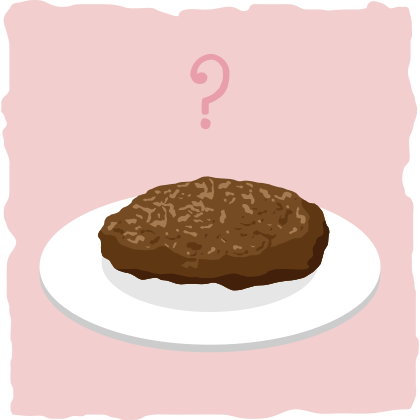
Keto-friendly veggie burger recipes should look something like this low-carb recipe, using only the healthiest low-carb ingredients and no carb-ridden fillers.
Nuts And Seeds
Many nuts and seeds are packed with protein as well.
The nuts and seeds with the most protein (per 100 grams) are:
- Pumpkin seeds with ~30 grams of protein
- Pistachios with ~21 grams
- Almonds with ~21 grams
- Sunflower seeds with ~19 grams
- Flaxseeds with ~ 18 grams
However, don’t forget to consider the carb content of these nuts and seeds as well:
- Pumpkin seeds have 54 grams of total carbs per 100 grams
- Pistachios have 28 grams of total carbs per 100 grams
- Almonds have 22 grams of total carbs per 100 grams
- Sunflower seeds have 20 grams of total carbs per 100 grams
- Flaxseeds have 29 grams of total carbs per 100 grams
And — although it’s technically a legume — peanuts are a great low-carb vegetarian protein source. They are packed with protein (~24 grams of protein in every 100 grams of peanuts) and relatively low in carbs (16 grams of total carbs in every 100 grams of peanuts).
Protein Powders
When it comes to buying protein powder, 100% grass-fed whey protein and organic pea protein isolate tend to be the best options. Although grass-fed whey protein isn’t any better than conventional whey protein from a nutritional perspective, it is definitely healthier for the environment.
If you are coming close to your carb limit for the day and still need more protein, then reach for a vegan, egg-based, or milk-based protein powder and use one of these strategies to maximize your daily protein intake:
Try these strategies to maximize your protein intake:
- Add protein powder to your low-carb smoothie. Add a scoop of your favorite protein powder to one of Ruled.me’s smoothie recipes. The Blueberry Banana Bread Smoothie, McKeto Strawberry Milkshake, Cucumber Spinach Smoothie, and Blackberry Chocolate Shake are some delicious examples you can try.
- Add a flavorless protein powder to your meals. Pea protein isolate tends to be the cheapest and easiest vegan powder to use, while whey protein is the most popular dairy-based protein powder. You can add them to sauces, mix them with your vegan burgers, or make delicious fat bomb protein bars with them.

How to Buy the Highest Quality Eggs and Dairy
In the opening of this article, we briefly mentioned how eggs and dairy production have a particularly low environmental impact compared to meat, farmed fish, and poultry.
Unfortunately, most of the dairy and eggs you’ll find in the supermarket come from dairy cows and hens that lived under horrid, torturous conditions. Each purchase of these conventionally-grown animal products casts a vote for nutritionally inferior foods and supports environmental pollution and animal abuse.
This is why it is important to look for eggs and dairy produced by sustainably-raised animals. To do this, we must shift our shopping strategy.
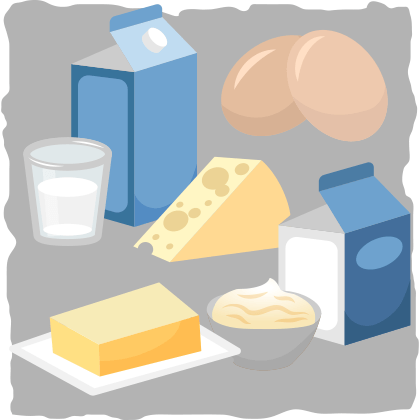
Instead of looking for the cheapest animal products with meaningless marketing terms like “cage-free” or “vegetarian-fed,” search for dairy and eggs that come from local, pasture-raised animals. Before you buy, research the company or farm behind the product to make sure they are raising the animals in a healthy, sustainable way.
If your local grocery store doesn’t have high-quality options, you can get high-quality eggs and dairy delivered to your house by ordering from these trustworthy sources:
- US Wellness Meats for 100% grass-fed pasture-raised cheese and butter.
- Udder Milk for all your high-quality dairy and egg needs.
- White Oak Pastures for the best-pastured eggs.
An even better strategy, to improve your health and the health of the environment, is to support your local farmers. To find out if there are local sources of high-quality dairy and eggs, search your area on one or both of these websites:
On the other hand, if you want to limit your dairy and egg consumption altogether, feel free to use the following keto-friendly dairy alternatives instead.
Vegan Alternatives for Eggs and Dairy
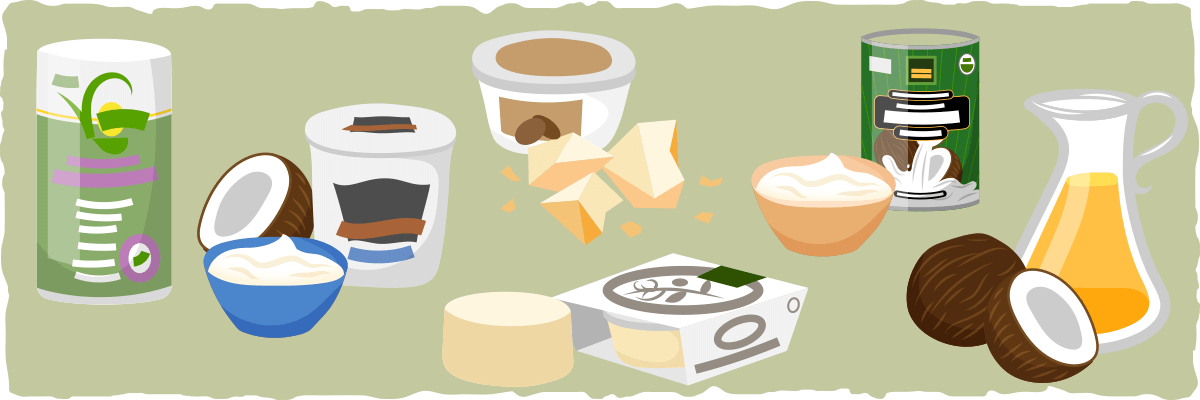
There are plenty of keto-friendly vegan alternatives that you can use to cut down on your cheese and egg consumption. Here is a brief overview of some of your options:
- Replace Heavy Cream with Coconut Cream.
- Instead of Butter use Coconut Oil or Vegan Butter.
- Replace Dairy-Based Cheese with Vegan Cheese.
- Instead of Cream Cheese have Vegan Soft Cheese.
- Replace Yogurt and Sour Cream with Nut-Based Yogurt.
- Instead of Eggs use The Vegg or VeganEgg.
For more details on how to find and use these vegan alternatives, read through our vegan ketogenic diet guide.
When it comes to buying keto-friendly vegan options, make sure you are not getting any extra added sugar, hidden carbs, or unhealthy ingredients like hydrogenated oils. Also, pay attention to their fat and protein content. These vegan replacements will not contain as much fat or protein as conventional dairy and eggs. Make sure you are taking this into account when you are using these alternatives in recipes and tracking your macros.
You also have to consider that eggs and dairy contain many nutrients that are not always present in the vegan replacements. So when cutting out animal foods altogether, you may have to supplement certain nutrients. You find more information about this in our vegan ketogenic diet guide.
The Takeaway — What To Eat on Keto For Vegetarians
The vegetarian ketogenic diet can be a very sustainable diet for the environment, animal health, and your health when done correctly. Just make sure you are restricting your carbs below 35 grams per day and eating plenty of fat and protein.
For the best results, stick to these vegetarian and keto-friendly foods:
- Vegan “meats” — tempeh, tofu, seitan, and other high-protein, low-carb vegan “meats.”
- Leafy greens – spinach, kale, etc.
- Above ground vegetables – broccoli, cauliflower, zucchini, etc.
- High Fat Dairy & Eggs – hard cheeses, heavy cream, butter, eggs, etc.
- Dairy Alternatives — unsweetened coconut-based yogurt, coconut cream, vegan cheeses, etc.
- Nuts and seeds – pistachios, almonds, sunflower seeds, pumpkin seeds, etc.
- Avocado and berries – raspberries, blackberries, and other low glycemic impact berries
- Sweeteners – stevia, erythritol, monk fruit, and other low-carb sweeteners >
- Plant-based fats – coconut oil, olive oil, MCT oil, avocado oil, etc.
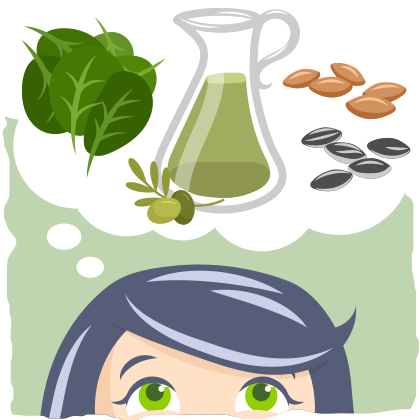
To find out exactly how much you need to eat to achieve your goals, plug your information into the keto calculator. Once you know how much you need to eat, we can figure out what to eat.
Vegetarian Ketogenic Diet Recipe Examples
For Breakfast:
Keto Zucchini Bread with Walnuts
A zucchini bread recipe without the excess carbs? You got that right! Plus, it is just as good, if not better, than the real thing. All you have to do is replace the sugar with erythritol and the flour with almond flour, and you have a delicious, keto-friendly recipe.
Weighing in with around 80% calories from fat, this breakfast will fill you up and keep you full until lunch. The great flavors of pumpkin spice come through to make a decadent morning meal that can be easily topped with a bit of extra keto maple syrup for the finishing touch. This seasonal favorite may even become your go-to breakfast.
If you are looking for a warming and comforting delicious and simple keto breakfast, have “oatmeal” — keto “oatmeal.” The texture isn’t exactly the same as oatmeal – but the taste is pretty darn close!
Yes, that’s right — Keto-friendly pancakes! If you want something that LOOKS like the real thing, that TASTES like the real thing, and most importantly can satisfy your need for this delicious temptation, then this pancake recipe is for you.
For Lunch:
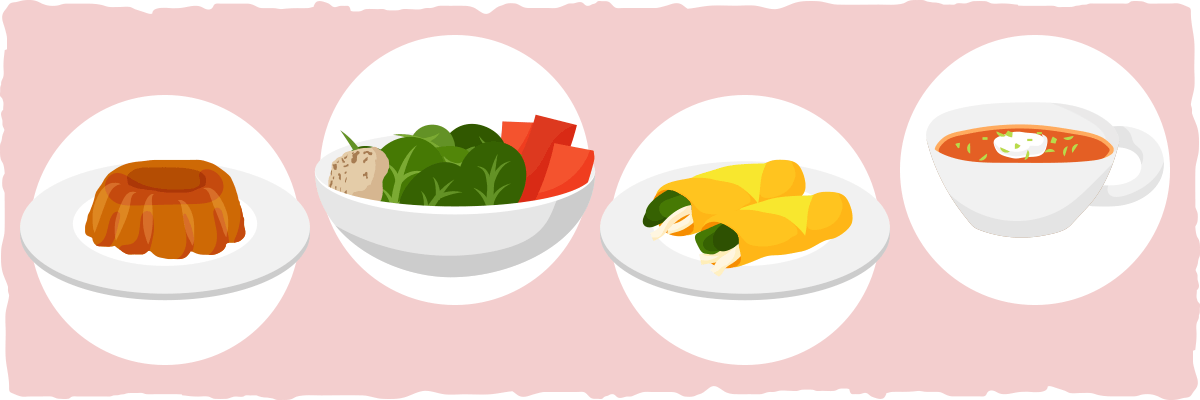
Garlic and Herb Monkey “Bread”
My mouth is watering thinking about how savory and cheesy this keto-friendly monkey bread is. The outside stays soft due to the texture and water content of the eggplant, but you will get a little crust on the edge and bottom of the monkey bread. The inside is cheesy and buttery with a hint of garlic. There’s no way you will miss the gluten with this recipe.
Charred Veggie and Fried Goat Cheese Salad
If you are looking for something hearty and warm that still gives you the crunch you crave from veggies, I highly recommend making this salad. The bite of a slightly charred bell pepper paired with the creamy yet tangy hunks of half melted goat cheese makes this taste like anything but a healthy keto salad. In fact, it’s so good that you won’t need dressing.
Although this is a standard coffee shop breakfast item, it doubles as a delicious vegetarian-friendly keto lunch as well. The combination of wilted baby spinach with chunks of tangy feta, fragrant basil, and slightly sweet sun-dried tomato bits make this the perfect breakfast, brunch, or lunch.
All of the flavors and textures you love in lasagna without the extra carbs. All you’ll need is zucchini, ricotta, mozzarella, marinara sauce, and 10 minutes to make this delicious Italian favorite for lunch.
For Dinner:
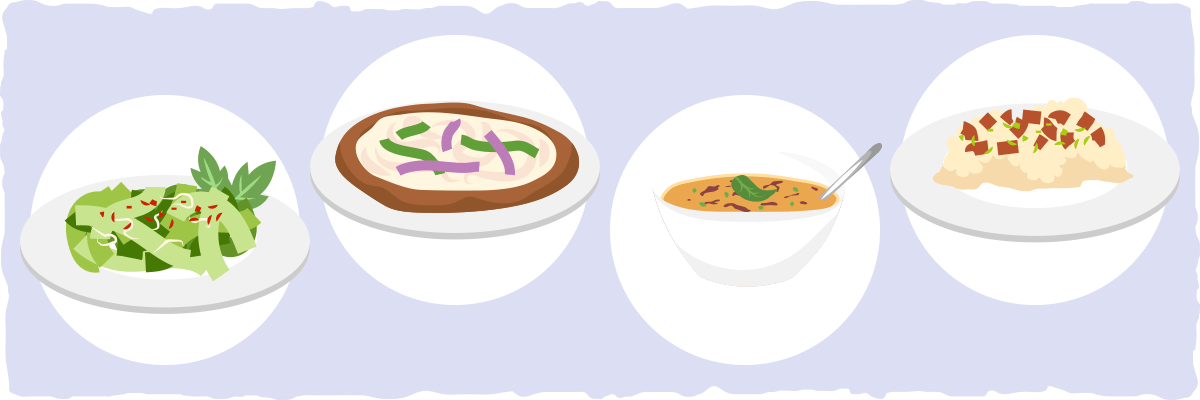
Zucchini Ribbons & Avocado Walnut Pesto
Craving a quick and easy pasta meal for a keto dinner? Try this zucchini pesto recipe. The zucchini noodles are thin and tender, providing the perfect vehicle to transfer all of the delicious flavors of the avocado walnut pesto to your mouth.
Cheese pizza in 5 minutes, and it’s keto-friendly. Throw away the number for pizza delivery — you won’t need it anymore.
Roasted Red Bell Pepper and Cauliflower Soup*
This is like a sophisticated version of tomato soup and grilled cheese – except without the bread. The tangy goat cheese really gives it another dimension of flavor and enjoyment.
*To make this recipe completely vegetarian: use butter or avocado oil instead of duck fat and vegetable broth instead of chicken broth.
Creamy, cheesy, and more flavorful than other carb-laden alfredo dishes. The eggplant noodles have a spongy texture that is perfect for soaking up sauce and fat without becoming too watery or too greasy. But hold on — what are vegetarian ketogenic dieters supposed to do about the bacon? Make vegan bacon instead.
*To make this recipe completely vegetarian: make vegan bacon by following the bacon recipe in the next section.
Side Dishes:
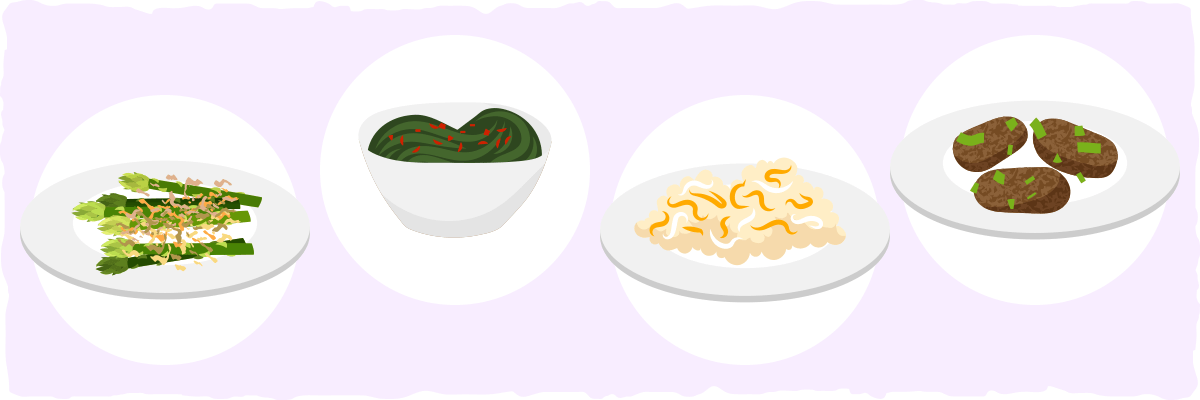
Asparagus Fries with Red Pepper Aioli
These keto-friendly fries are crispy and cheesy on the outside, but still tender enough to bite into. Fresh parsley and parmesan cheese add a tangy, bright dimension that is given a little body with smoked paprika.
This side dish is so delicious and has such a creamy texture that you will forget you are eating a leafy green. It’s quick, easy, tasty, and healthy — what more could you ask for in a keto-friendly side dish?
There is something about cauliflower that gives it such a delicious flavor on its own after it’s baked. Add some onion, sour cream, and cheese on top, and you are in for a real treat. The kids will love it too!
Tater tots without the taters, and you’ll still be a craver. There’s no need for potatoes when you use this delicious recipe. You’ll end up with miniature sized, golden brown bites of deliciousness that will go with just about every meal. Feel free to serve them up with low-carb fry sauce, and dip away.
For Dessert:

Tropical Chocolate Mousse Bites
Want a piece of keto-friendly chocolate with a delectable rich mousse center? Make these. I rate these up there with the finest chocolatiers, except they are very much keto friendly. The mousse mix has a hint of lemon and coconut which gives a bit of freshness, but you can choose to leave these out if you wish.
Very much like white-flour based chocolate chip cookies, but healthier and more filling. Bake a batch of these keto-friendly cookies, and you’ll have a healthy way to satisfy your sweet tooth at any time.
So sweet and full of flavor — each cupcake is rich enough in vanilla that anyone would be able to taste it. This is a recipe you really have to try for yourself. The cake of the cupcake is paired with a vanilla cream cheese frosting, which complements it really nicely. Even a plain cream cheese frosting would work beautifully with these cupcakes too.
Keto Cookies and Crème Ice Cream
Sometimes a meal just doesn’t feel complete without ice cream. This keto cookies and crème recipe will satisfy your ice cream needs and then some. Have a scoop with some low carb coconut chip cookies if you really want to treat yourself.
Note: You may notice that one of these recipes (and many many more on the ruled.me website) calls for bacon. However, this doesn’t mean that you have to skip this or any other bacon containing keto recipes. You can make your own homemade vegan bacon instead.
Add Bacon to Any Meal With Homemade Vegan Bacon!
Although there are many vegan bacon products on the market, they tend to be filled with chemical preservatives and other questionable ingredients. Make healthy vegan bacon instead!
There are plenty of vegan bacon recipes on the internet that claim to give you the bacony taste and texture you crave. Try some out for yourself:
- Vegan Bacon Recipe With Mushrooms (substitute low-carb maple syrup for regular maple syrup)
- Vegan Bacon Recipe With Tofu

With that, we have protein, fat, carbs, vegetarian keto meals, and vegan bacon covered. We are now fully equipped with all the knowledge we need to follow the vegetarian ketogenic diet and get amazing results.
One Week of The Vegetarian Keto Diet — A Sample Meal Plan
Monday
- Breakfast: 1-2 slices of Keto Zucchini Bread with Walnuts with butter or cream cheese
- Lunch: 1 serving of Charred Veggie and Fried Goat Cheese Salad
- Dinner: 1 serving of 5 Minute Keto Pizza
- Side Dish: 1 serving of Asparagus Fries with Red Pepper Aioli
- Dessert (optional): pick any dessert from above and use it to fulfill your macronutrient needs.
Tuesday
- Breakfast: 1 serving of Fluffy Buttermilk Pancakes
- Lunch: 1 serving of Keto Mug Lasagna
- Dinner: 1 serving of Eggplant and Bacon Alfredo
- Side Dish: 1 serving of Easy Keto Creamed Spinach
- Dessert (optional): pick any dessert from above and use it to fulfill your macronutrient needs.
Wednesday
- Breakfast: 1 serving of Pumpkin Spiced French Toast
- Lunch: 1-2 Spinach, Herb & Feta Wraps
- Dinner: 1-2 servings of Roasted Red Bell Pepper and Cauliflower Soup
- Side Dish: 1 serving of Keto Tater Tots
- Dessert (optional): pick any dessert from above and use it to fulfill your macronutrient needs.
Thursday
- Breakfast: 1-2 servings of Cinnamon Roll “Oatmeal”
- Lunch: 2-3 servings of Garlic and Herb Monkey “Bread”
- Dinner: 1-2 servings of Zucchini Ribbons & Avocado Walnut Pesto
- Side Dish: 1 serving of Cheesy Cauliflower Casserole
- Dessert (optional): pick any dessert from above and use it to fulfill your macronutrient needs.
Friday
- Breakfast: 1 serving of Pumpkin Spiced French Toast
- Lunch: 1 serving of Charred Veggie and Fried Goat Cheese Salad
- Dinner: 1 serving of Eggplant and Bacon Alfredo
- Side Dish: 1 serving of Asparagus Fries with Red Pepper Aioli
- Dessert (optional): pick any dessert from above and use it to fulfill your macronutrient needs.
Saturday
- Breakfast: 1-2 slices of Keto Zucchini Bread with Walnuts with butter or cream cheese
- Lunch: 1-2 servings of Roasted Red Bell Pepper and Cauliflower Soup
- Dinner: 1 serving of 5 Minute Keto Pizza
- Side Dish: 1 serving of Cheesy Cauliflower Casserole
- Dessert (optional): pick any dessert from above and use it to fulfill your macronutrient needs.
Sunday
- Breakfast: 1 serving of Fluffy Buttermilk Pancakes
- Lunch: 1 serving of Keto Mug Lasagna
- Dinner: 1-2 servings of Zucchini Ribbons & Avocado Walnut Pesto
- Side Dish: 1 serving of Easy Keto Creamed Spinach
- Dessert (optional): pick any dessert from above and use it to fulfill your macronutrient needs.
How To Implement The Vegetarian Ketogenic Diet Meal Plan Properly
With this simple vegetarian ketogenic meal plan template, you’ll be able to make more than a full week’s worth of meals for one.
These recipes will provide you with leftovers, so you may not have to prepare the same recipe more than once in a week.
If you’d like to get more creative and try something new, check out Ruled.me’s recipe page to find other vegetarian-friendly or “vegeterianizable” recipes.
Use the calorie breakdowns on the meals to guide your decision of how much to eat. Your meals should be big enough so that you don’t feel the need for snacks or dessert.

That being said, you may still have some days where you struggle to meet your macronutrient goals. In these cases, use the desserts in this article (or other keto-friendly sweets that you can find here) to reach your goals and satisfy your sweet tooth at the same time.
There is, however, a vitally important caveat. It is hard to know precisely what your macronutrient ratios will be for each meal without knowing what vegetarian alternatives you use. The macronutrient counts on every Ruled.me’s recipes may not be 100% accurate for all of your meals.
It is your responsibility to make sure you are meeting your carbs, fat, and protein needs (which you can find with the keto calculator). The easiest way to do this is by using our carb counting guide.
Another crucial caveat is that it is possible to develop various nutrient deficiencies on the vegetarian diet. To ensure that your micronutrient needs are covered, follow the simple suggestions below.
The Main Risk of Vegetarian Keto: Nutrient Deficiencies and How to Avoid Them
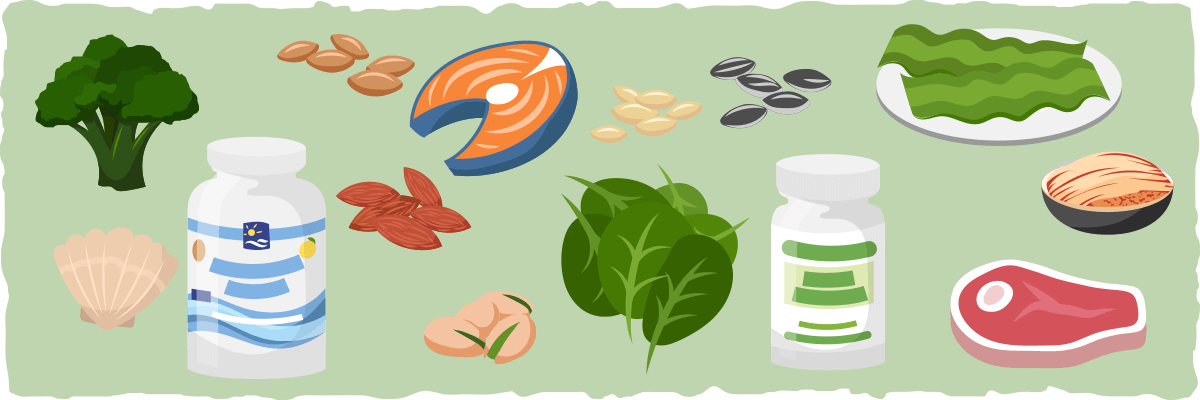
A meatless diet can be one of the healthiest diets, but this dietary approach can also be particularly low in vitamin B12, EPA & DHA, calcium, iron, and zinc.
To help you cover most (if not all) of your nutritional needs, here is a brief overview of what you can do while you are following the vegetarian ketogenic diet:
- Eat as much real food as possible — limit your consumption of fake meats, overly processed soy products, vegan junk food, etc.
- Take a vegan DHA+EPA supplement.
- Properly prepare any seeds and nuts that you eat. Soaking and sprouting (when possible) help deactivate mineral-binding proteins that impair mineral absorption.
- Eat some fermented foods like sauerkraut, kimchi, and natto to improve digestion and vitamin and mineral absorption.
- Keep your thyroid in good shape by eating iodine-rich food like seaweed and increasing your selenium intake.
- Take a zinc supplement (like Zinc Balance) if you are experiencing zinc deficiency symptoms like dry skin or getting sick with a sore throat more often than usual.
- Supplement with carnosine and creatine. These two compounds help improve health and exercise performance in a variety of ways. Unfortunately, they are not found in plant foods.
- Maximize iron absorption by having vitamin-C-rich foods. (If your diet isn’t meeting your iron needs, you can also supplement with a heme-iron supplement.)
Consider adding oysters, clams, and other bivalves to your diet. They are typically filled with so much B-12 and zinc that you may be able to cover your needs by eating them just once a week.
Other Potential Downsides of Cutting the Carbs and Animal Products
Even if all of your nutrient needs are met, you might still be at risk for experiencing one or both of the following:
1. The keto flu.
Restricting carbs and transitioning into ketosis can cause several short-term flu-like symptoms. These may include constipation, fatigue, headaches, and cramps. Fortunately, these side effects typically clear up within 3-5 days and can easily be remedied with the recommendations in our guide to the keto flu.
2. Excessive dietary restriction may be unhealthy for certain people
Since the vegetarian keto diet is more restrictive than most diets, it may not be a good option for certain health conditions or during specific life stages.
In particular, this dietary approach may not be suitable for:
- Children
- Women who are pregnant or breastfeeding
- Athletes who are playing high-intensity sports
- Those with a history of eating disorders
- People with type 1 diabetes
As with any substantial dietary change, it is important to talk to your healthcare practitioner before starting this diet.
Putting It All Together — How to Thrive On The Vegetarian Ketogenic Diet
By following the vegetarian ketogenic diet, you can help reduce your environmental impact, decrease animal suffering, and improve your health. However, this diet requires more hard work and dedication than most diets to get it right and reap all the benefits.
To implement the diet correctly, you must follow these rules:
- Limit your total carbohydrate consumption to 35 grams or less per day.
- Eliminate all animal flesh from your diet (e.g., meat, fish, and poultry).
- Eat plenty of low-carb vegetables.
- Get at least 70% of your calories from fat.
- Consume plant-based proteins, eggs, and high-fat dairy to meet your protein needs (roughly 25% of calories).
- Supplement with nutrients that you may not be getting enough of like vitamins D3, DHA & EPA, iron, and zinc.
- Use the keto calculator to figure out your calorie and macronutrient needs.
To meet your protein needs, focus on foods like:
- Tofu, Tempeh, Seitan, and other high-protein vegan “meats.”
- Vegan, egg white, and dairy-based protein powders
- Plant-based oils like coconut oil, avocado oil, MCT oil, avocado oil, olive oil, etc.
- High-protein nuts and seeds
- Eggs and full-fat cheese
If you’d like to minimize your dairy and egg consumption as well, try using:
- Vegan egg replacements like The Vegg or VeganEgg
- Coconut milk and other varieties of nut milk
- Coconut cream
- Coconut yogurt and other types of nut-based yogurt
- Vegan cheese (some of the best vegan cheese is made by Treeline, Miyoko’s Kitchen, and Follow Your Heart)
Not sure how to combine these vegetarian keto foods into a meal? Here are some delicious dishes worth trying:
For Breakfast:
- Keto Zucchini Bread with Walnuts
- Pumpkin Spiced French Toast
- Cinnamon Roll “Oatmeal”
- Fluffy Buttermilk Pancakes
For Lunch:
- Garlic and Herb Monkey “Bread”
- Charred Veggie and Fried Goat Cheese Salad
- Spinach, Herb & Feta Wrap
- Keto Mug Lasagna
For Dinner:
- Zucchini Ribbons & Avocado Walnut Pesto
- 5 Minute Keto Pizza
- Roasted Red Bell Pepper and Cauliflower Soup*
*To make this recipe completely vegetarian: use butter or avocado oil instead of duck fat and vegetable broth instead of chicken broth.
*To make this recipe completely vegetarian: make vegan bacon by following a bacon recipe from the article.
As A Side Dish:
- Asparagus Fries with Red Pepper Aioli
- Easy Keto Creamed Spinach
- Cheesy Cauliflower Casserole
- Keto Tater Tots
And Finally — For Dessert:
- Tropical Chocolate Mousse Bites
- Low Carb Coconut Chip Cookies
- Keto Vanilla Bean Cupcakes
- Keto Cookies and Crème Ice Cream
Keep in mind, however, that the keto vegetarian diet might not be able to cover all of your nutritional bases.
Here is a list of suggestions to help make sure that you’re getting the nutrients you need:
- Eat as much real food as possible — limit your consumption of fake meats, overly processed soy products, vegan junk food, etc.
- Take a vegan DHA+EPA supplement.
- Properly prepare any seeds and nuts that you eat. Soaking and sprouting (when possible) help deactivate mineral-binding proteins that impair mineral absorption.
- Eat some fermented foods like sauerkraut, kimchi, and natto to improve digestion and vitamin and mineral absorption.
- Keep your thyroid in good shape by eating iodine-rich food like seaweed and increasing your selenium intake.
- Take a zinc supplement (like Zinc Balance) if you are experiencing zinc deficiency symptoms like dry skin or getting sick with a sore throat more often than usual.
- Supplement with carnosine and creatine. These two compounds help improve health and exercise performance in a variety of ways. Unfortunately, they are not found in plant foods.
- Maximize iron absorption by having vitamin-C-rich foods. (If your diet isn’t meeting your iron needs, you can also supplement with a heme-iron supplement.)
- Consider adding oysters, clams, and other bivalves to your diet. They are typically filled with so much B-12 and zinc that you may be able to cover your needs by eating them just once a week.
And most importantly:
- Eat the right amount of calories, carbs, fats, and protein.
All of the effort you put into following the vegetarian ketogenic diet will mean nothing if your macronutrient consumption is off track. To find what numbers you should aim for, plug your information into our keto calculator.
Once you’ve done that, read through our beginner’s guide, so you know what to expect on the ketogenic diet.
For those of you looking eliminate all animal products from your keto diet, we recommend checking out our comprehensive guide to the vegan ketogenic diet as well. It includes a one-week vegan ketogenic diet meal plan and plenty of suggestions on how to veganize your favorite keto meals.
Sources:
- Vegetarianism and Nutrient Deficiencies — Weston A. Price Foundation
- Hypothyroidism (underactive thyroid) — Mayo Clinic
- Are Goitrogens in Foods Harmful? — Healthline
- Why You Should Think Twice About Vegetarian and Vegan Diets — Chris Kresser
- If everyone became vegetarian, would the planet actually be better off? — Popular Science
- 16 Nuts and Seeds High in Protein — HealthAliciousNess
- 7 Nutrients That You Can’t Get From Plant Foods — Healthline
- Ask the Expert: Soy — Physicians Committee for Responsible Medicine
- Antimicrobial, antioxidant and anti-inflammatory phenolic activities in extra virgin olive oil — Science Direct
- Characteristics of Red Palm Oil, a Carotene- and Vitamin E–Rich Refined Oil for Food Uses — Sage Journals
- Nuts, body weight and insulin resistance — Cambridge
- MCT Oil 101 – A Review of Medium-Chain Triglycerides — Authority Nutrition
- Creatine — Examine
- Beta Alanine — Examine
- l-carnosine (β-alanyl-l-histidine) and carcinine (β-alanylhistamine) act as natural antioxidants with hydroxyl-radical-scavenging and lipid-peroxidase activities — Biochemical Journal
- Food Iron Absorption: A Comparison of Vegetable and Animal Foods — Blood Journal
- Position of the American Dietetic Association: vegetarian diets. — Europe PMC
- Red and Processed Meat Consumption and Risk of Incident Coronary Heart Disease, Stroke, and Diabetes Mellitus — Circulation
- Evaluating the Research on the WHO Red Meat Controversy — Ruled.me
- How much does animal agriculture and eating meat contribute to global warming? — Skeptical Science
- Eggs, pasture-raised — The World’s Healthiest Foods
- Cow’s milk, grass-fed — The World’s Healthiest Foods
- GMOs and Pesticides: Helpful or Harmful — Harvard University
- Evaluation of Chemical and Physical Changes in Different Commercial Oils during Heating — Acta Scientific Nutritional Health

